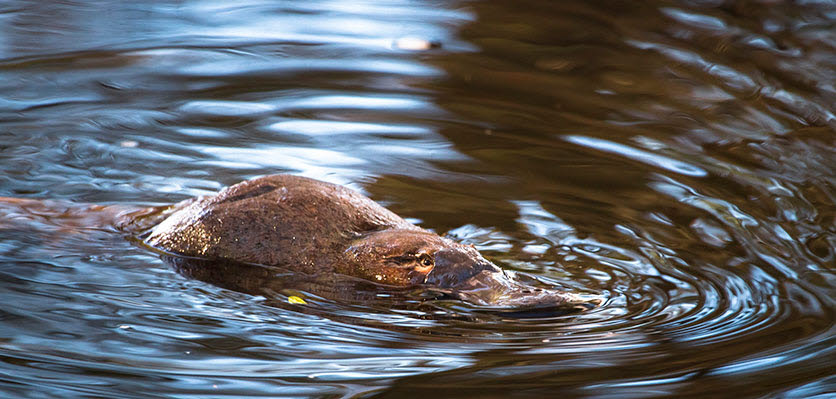
Michael Banyard, President of the Australian Veterinary Conservation Biology Special Interest Group, wishes to highlight this important wildlife welfare issue.
The death of air-breathing wildlife in enclosed yabby traps is a significant animal welfare issue and may have genuine conservation implications, especially for small populations of animals near popular camping spots.
Last May, five platypus drowned in two opera-house yabby traps set in Labertouche Creek near Melbourne. It horrified most people who heard about it. As former AVA President Robert Johnson says, enclosed traps are “…an important animal welfare and conservation issue involving an iconic Australian species.”
Depressingly, this was just one in a long list of cases in which platypus, Australian water-rats/rakali or freshwater turtles are known to have died in enclosed yabby traps.
Recreational fishing authorities in eastern mainland Australia have prohibited the use of opera-house traps and other enclosed designs in waters where the platypus is known to occur. This means that generally traps can be legally deployed only in private farm dams in Victoria, the ACT and through much of NSW and Queensland. Unfortunately, these rules are widely broken, often by persons who are unaware of the relevant rules when they purchase traps for a few dollars each. Effective law enforcement is almost impossible because the traps are relatively small and inconspicuous and are frequently set in the evening.
Furthermore, water-rats and turtles remain at risk in many places where enclosed traps can be set legally, particularly in South Australia and the Northern Territory.
The Australian Platypus Conservancy (APC) and Dr. Tom Grant of the University of NSW has carried out fieldwork over several years in a bid to identify safer yabby trap designs. The platypus’s streamlined shape and ability to squeeze through small gaps make it difficult to design an enclosed trap that will totally exclude the species while still encouraging large yabbies to enter.
Recent field trials have tested whether adding an ‘escape hatch’ to a trap’s roof will consistently allow a platypus to escape in a timely manner, with trials conducted of several different hatch types.
Although most platypus exited successfully, some animals failed to emerge quickly and had to be released by researchers. After a great deal of effort, it was ultimately concluded that a 100% platypus-safe enclosed trap is unlikely to be achievable.
The APC believes that mandating a total ban on recreational use of opera-house traps and other enclosed designs is the only realistic way to minimise the risk that non-target wildlife is harmed through yabbying. Such a ban will require fishing regulations to be amended in all states and territories, apart from Tasmania and Western Australia where prohibitions are already in place. Interestingly, both VRFish (Victoria’s peak body for recreational anglers) and the Recreational Fishing New South Wales Advisory Council already support such a ban. It is our understanding that Victoria and NSW are now considering moves to ban recreational use of enclosed traps, and the ACT is likely to adopt any new NSW regulations. This leaves Queensland, South Australia, and the Northern Territory as the remaining jurisdictions where positive action to ban enclosed traps needs to be initiated.
There are clearly many responsible users of enclosed yabby traps, including landholders who have been yabbying for generations in farm dams without harming non-target species. However, it should also be recognised that alternative recreational yabbying methods exist (e.g. hoop or lift nets) that are both highly productive and entirely safe for air-breathing wildlife.
The platypus is an iconic species and most Australians do not approve of them being killed in enclosed yabby traps. It’s time for a nation-wide ban on their use.
A more detailed information paper on this issue is available on the APC website at www.platypus.asn.au.
This article appeared in the Australian Veterinary Journal: Aust Vet J 2018;96(3):N16
